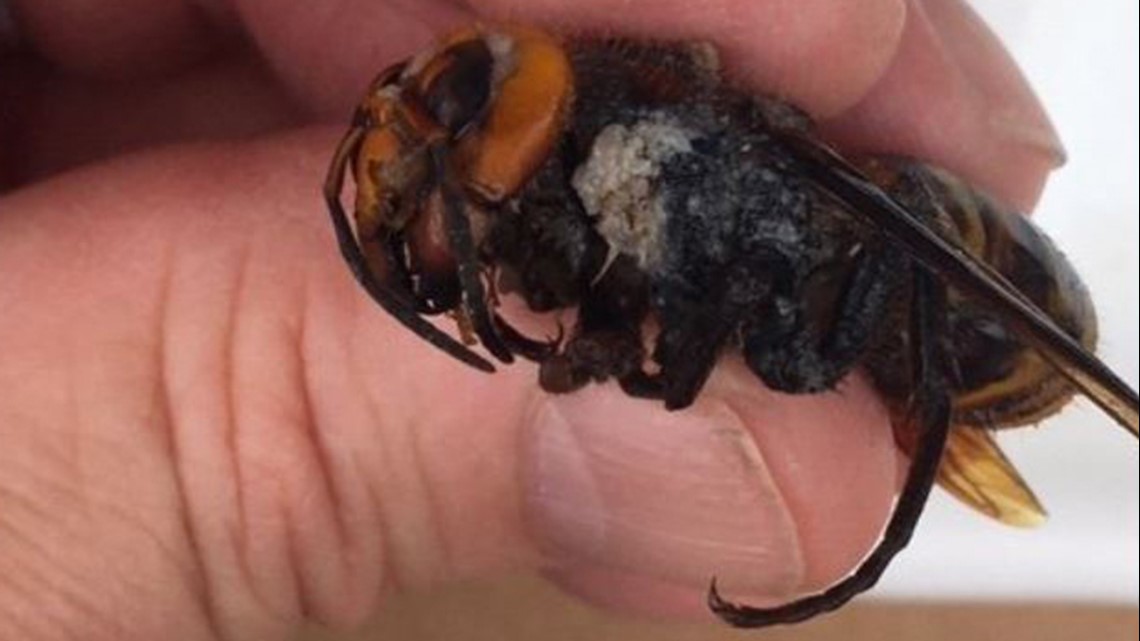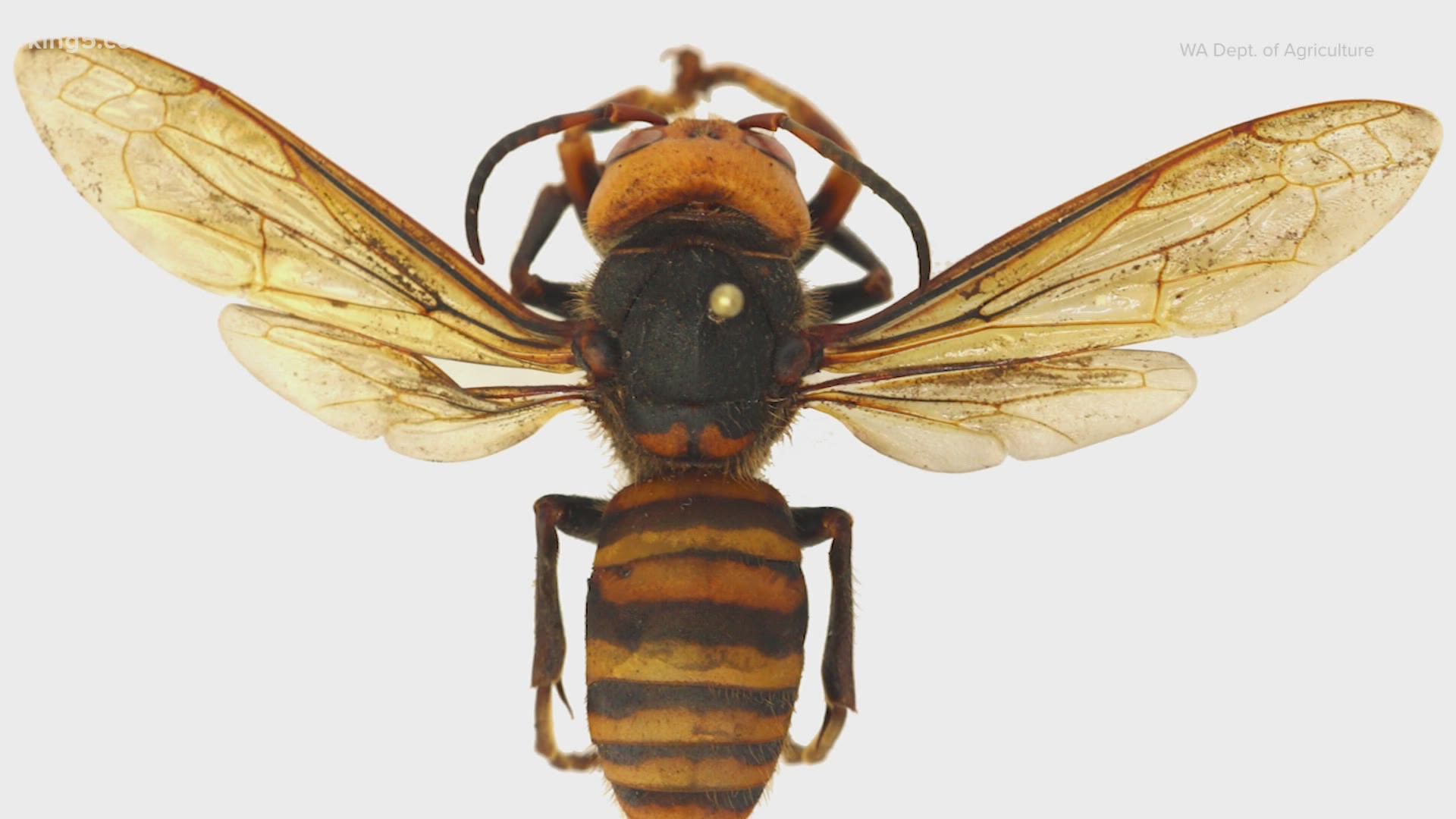Another Asian giant hornet was found and killed in Washington, the state Department of Agriculture (WSDA) confirmed Thursday.
The department said someone found the hornet “wiggling on the porch” at their Bellingham home and stepped on the hornet, killing it. The person then collected and reported the specimen, and the state was able to confirm it was an Asian giant hornet.


The next closest confirmed sighting of an Asian giant hornet was on May 27 in the town of Custer, which is about 15 miles northwest of Bellingham.
Asian giant hornets are an invasive species that attack honey beehives for protein, potentially taking out 30,000 honey bees in an otherwise healthy hive.
The WSDA shared a tutorial showing how to make an Asian giant hornet trap for anyone interested in becoming a citizen scientist to help track the invasive species. The tutorial video shows how to create a trap at home, what bait to use, how to service the trap, and how to report the findings. However, the WSDA said the instructions are only for trapping the species within Washington state.
“There are no known sightings of Asian giant hornets anywhere else in the United States and trapping for them there will likely do more harm than good by catching native desirable insects. PLEASE DO NOT TRAP FOR ASIAN GIANT HORNETS IF YOU LIVE OUTSIDE OF WASHINGTON STATE,” the department posted on its website.
Below are instructions from the WSDA on how to make a bottle trap for the hornets. You can also click here for downloadable instructions with photos.
What you need:
The WSDA said the materials below are to create one trap for an entire 17 week trapping season from July through October.
- A 2 liter or 64-ounce plastic bottle
- Box cutter
- String or twine
- Orange juice (100% juice, no pulp, with few additives) - 17 4-ounce juice boxes
- Rice cooking wine (10-25% alcohol content) 64 ounces or 3 25-ounce bottles
- 5 x 6 x 2 inch storage container
- Strainer
- Isopropyl alcohol
Preparing the bottle:
- Near the top of the bottle make 2 cm (0.78 inch) long "H" marks on three sides.
- Using a box cutter or sharp knife, very carefully cut along the "H" marks.
- Carefully fold the top tabs in and the bottom tabs out on all three sides.
Preparing the bait:
- Rice cooking wine will discourage honey bees from visiting the trap. Ensure that the alcohol content is between 10% and 25% by volume.
- Use 4 ounces (1/2 cup) of rice cooking wine.
- Use 4 ounces (1/2 cup) of 100% real orange juice. 4.2-ounce juice boxes are perfect and have a long shelf life. We suggest pulp-free orange juice so that the pulp doesn't get stuck to any trapped insects.
- Pour the rice cooking wine and orange juice into the bottle and replace the cap.
Select a site for the trap:
The WSDA said the bottle trap should be hung at least six feet high on a tree near the edge of a forest, if possible, but not to hang the trap higher than nine feet. If multiple traps are being placed, they should be at least 50 feet apart from another.
Next, tie a sturdy string or wire around the neck of the bottle and hang it close to the tree so the opening that was cut into the bottle is facing out.
The WSDA said the next step is to report the location of the Asian giant hornet trap to the online Hornet Watch Trap Submission Map so they can be tracked.
Servicing the traps and collecting specimens:
Samples should be collected every week and the bait should be replaced, even if no specimens are captured.
If you discover a live Asian giant hornet in one of your traps, WSDA said not to handle the trap and to contact them immediately at 1-800-443-6684.
Unscrew the top of the bottle and pour it into a strainer with the closed side of the bottle facing down. Empty the strainer into a storage container and refill the bottle with the bait mentioned above.
Reporting:
The WSDA said there are two ways to report your discoveries: If there are no bees, wasps, or hornets present; if there is a bee, wasp, or hornet in the trap.
If no specimens are in the trap, the WSDA said to take a photo of the contents and email the photo to aghtrapping@agr.wa.gov with the trap number and date.
If there is a bee, wasp, or hornet in the trap, the WSDA said to submit all of the contents of the trap using the instructions on their website by clicking here.


